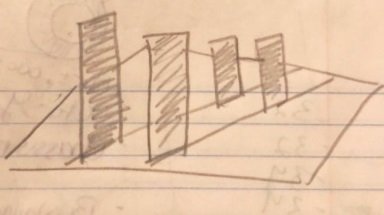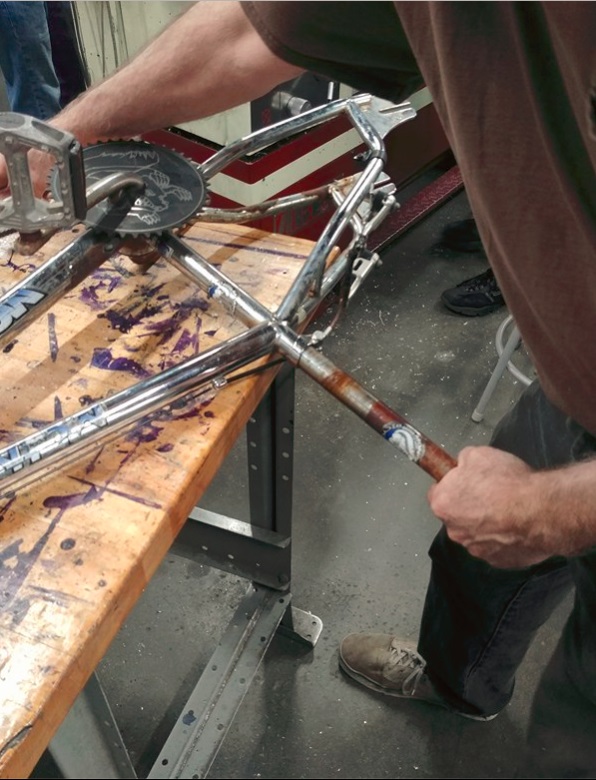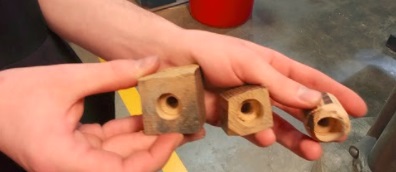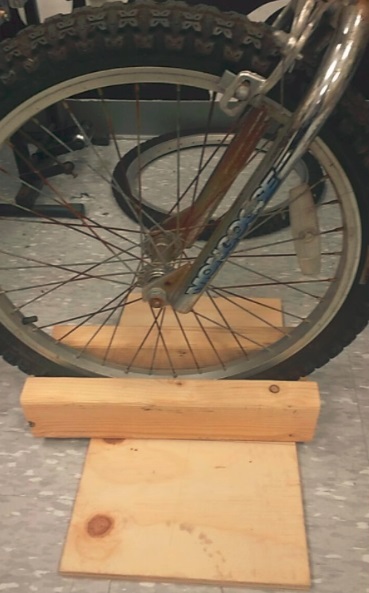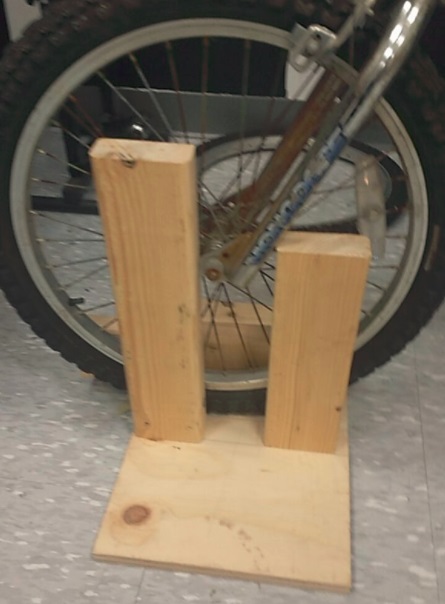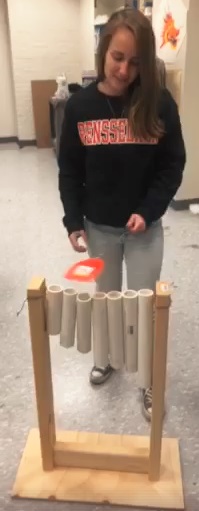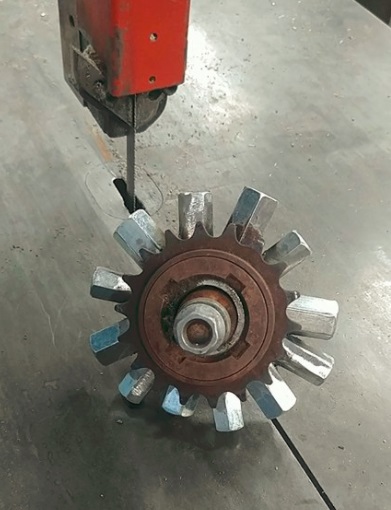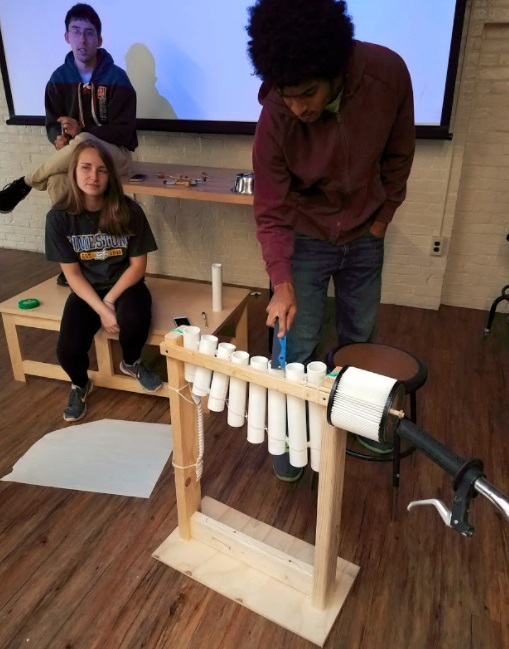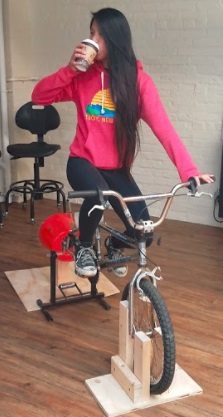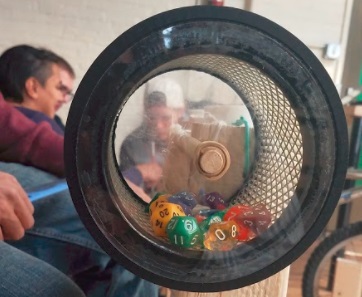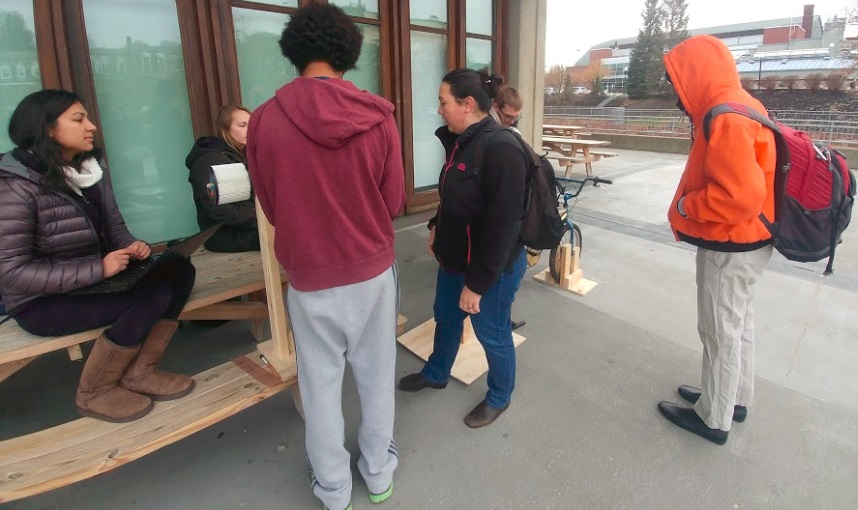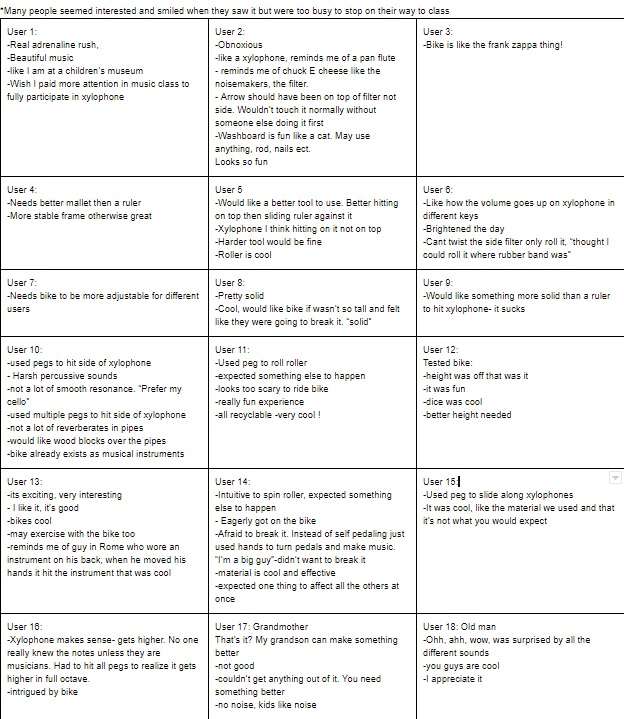Pop-Up Symphony
Dec 11th, 2017 by stormm
Pop-Up Symphony
Ria Shroff, Matthew Stormer, Olivia Jacome, Ryan Tozier, Edwin Thomas, Jena Dolinar
The Product
The Pop-Up Symphony project aims to surprise and amuse the user with its use of everyday objects in new and unique ways in order to create music. As Oscar Niemeyer once said, “Surprise is key in all art”. In addition to being an interactive art installation, the way that pieces are built allows Pop-Up Symphony to be a useful tool to spark learning from play. Interchangeable, moving parts allow children to change beat frequency and sounds created in order to experiment with basic music concepts of tempo, time signature, tone, and coordination. Each piece of the symphony allows for several ways a user can engage and adapt pieces to suit their own experience. And collectively, it allows people to interact with each other to create a constructive experience using multiple elements at the same time.
The Product – both the bike and the standalone attachment feature three noise-making elements. On the bike, this is the bucket, pipe, and frame which is hit by adjustable mallets, and on the frame, this includes the xylophone, plastic washboard, and filter rain drum. Ft. Olivia, Matthew, Edwin, and happy Ryan
The Inspiration
The idea for the project originated from a collaboration with the Sanctuary for Independent Media (SIM); one problem space discussed during this interaction was the question of how to positively engage the surrounding community. Another consideration was that any proposed installation should match the aesthetic and feel of the area. In the outdoor spaces, a local artist utilized old bike parts, specifically bike wheels in novel ways that provided function, but also set a tone of play around the space. Not only did SIM have certain objectives for the project, but the designers entered this project with certain hopes as well. Jena wanted to generate a physical prototype that would complement her portfolio, Ria wanted to create something that incorporated play, Ryan hoped to create noise and release energy, Matthew wanted to ensure that core educational concepts were adequately addressed, Edwin wanted to create something fanciful and wonderous, and Olivia stressed the need for a project with a reasonable scope.
These considerations led to the first form of the Pop-Up Symphony which was a music-making, energy generating, bike symphony.
Idea One – the initial idea was broad; it was imagined as some crude mix of an energy generating bike and durable playground instruments
The group ended up splitting ways with SIM due to a difference in vision for how to improve that space. This ended up being beneficial to the group as some initial constraints were removed and allowed for a more flexible design of the project. The group vision shifted from a standalone music bike to a unique, immersive music experience – a Pop-Up Symphony.
Initial Design
Different mechanisms were imagined for putting the bike together in interesting ways. The following are different models for how different instruments might be incorporated into the bike.
Sketches helped determine how different instruments could be added to the bike and play station. To remain within the scope of the project, the team focused on only the instruments that were deemed most feasible and desired. Materials that could be used for these instruments were also accessed before being purchased
Xylophone Frequency Calculations – Matthew made these calculations to determine the optimal length of the pipes before any material was bought in order to maximize resources
Building
Translating sketches and plans into a physical form meant some pivoting in design to what was feasible with the abilities of this group.
 c
c
The bike was severely rusted, Edwin cut his hand when an allen wrench broke while trying to loosen nuts, and the team had to rely on the expertise of John Szczesniak to remove the bike seat (left) in order for Ryan to then cut it down to size (right)
Jan, a TA in the shop and former DIS student, cut brake lines for the team in order to make space in the back of the bike for attachments to be added
Matthew and Ria used an angle grinder to remove spokes off of the back wheel to preserve the center axle and also later use the wheel to make a rain stick (left), Jena cut some hanging spokes at a later point, and Ryan welded threaded nuts to the axle which would then become mounts for the mallets (right)
A previous studio project was a source of inspiration for how certain parts of this project were built. The mallets constructed by the previous group with a spring tip that shielded mallets from breaking as they hit instruments were taken and directly used for this project. In order to have the mallets be removable, and interface with the threaded nuts Ryan had welded, joints, seen below, connected the wooden mallet ends to threaded bolt bodies via epoxy, and for one, tacky glue
The front of the bike needed to be secured with a frame, two designs were considered in physical space. The horizontal design ensured the wood would not splinter and would keep children from moving the bike left and right (left), the vertical design also keeps forward and backward movement, noticing that 2x4s are more robust in real lift than in a drawing made this the final design choice (right)
Prototype
Because the base bike was the most expensive part of the project, iterative prototypes were developed on the same frame where the bike never changed, but the parts around it changed. The final prototype reflects several pivots the way in which we expected users to interact with the project.
The xylophone was initially built missing a pipe, meaning that it skipped a note where the scale went from B, C, E, F, G, A, B. This was later rectified before user testing. Jena can be seen hitting the pipes with a flyswatter, a ruler was also used. This part ended up being much more important to the system than originally intended. A shift was made from a bike centered music machine to a music center (left). Multiple rows of mallets were initially imagined to allow for different rows of sounds. However, to ensure the bike remained stable through user testing, potentially with kids, the bike frame was not adjusted and only a single row for mallets could be made (right)
Because only a single axis for mallets could be created, the “instruments” were set up to be changeable. The red kick drum can be replaced by larger, deeper tone drums, or attached to the platform at different parts of the bucket to create different resonance from the bucket as it is struck. An added, accidental feature is that due to the handmade nature of the mallet joints and welded nuts, when put together, some are slanted left or right. This meant that an additional tone of striking the metal bike frame is created
 The frame was stable enough to hold both Matthew and Edwin, giving the team confidence to allow others to test. However, the aesthetic look of a rusted bike and wooden pieces that were meant to hold other large peers made most apprehensive to try the bike. To amend this, the bike and xylophone were painted. The xylophone was also painted to show what each note was so that people would recognize it as a xylophone
The frame was stable enough to hold both Matthew and Edwin, giving the team confidence to allow others to test. However, the aesthetic look of a rusted bike and wooden pieces that were meant to hold other large peers made most apprehensive to try the bike. To amend this, the bike and xylophone were painted. The xylophone was also painted to show what each note was so that people would recognize it as a xylophone
Evaluation
Once improvements are made to the prototype based on ongoing user feedback, evaluating the success of the project is necessary to ensure all initial goals were met. Evaluation can be broken down into mechanical, melodic, user experience, education, and dissemination evaluation. The mechanical evaluation would consist of testing that all pieces would consistently work without major damage or breaking. This tests material durability, interface between different parts, and aggressive use of the bike. Melodic testing would check if pitches desired are produced when the bike is used. This means that would a drum produce a resounding sound, would the xylophone produce an octave, and would other pieces produce harmonious noises. To see if users actually learn something while play with our project, ethnographic observation and interviews can be conducted. If users begin to understand what kind of rhythms and tempos make the best sounds, then it can be assumed that they are passively learning from their experiences with the project. This will have to be tested by asking people what they think about the installation in different spaces. For example, parents can be asked if they would prefer to drop their kids off to play with the project while they shop or if they would rather have their eyes on their kids at all times. Different spaces may be found to be more appropriate than others for the project.
Matthew wrote this waiver so that the necessary user testing for evaluating this project could be conducted with full consent of the children and parents
User Testing
Students had mixed opinions about the bike. In-class user testing showed that the external appearance of the bike was a bit scary to some which kept their interactions focused on the xylophone. Those that did interact with the bike enjoyed it, however, wanted more freedom to pedal fast and play without breaking mallets off the bike. Adjustments were also suggested to improve the xylophone, including making the height on the top uniform so hitting each pipe is equally satisfying. The colors within the filter were appreciated and mesmerizing to several students. Part of the enjoyment for some also came from observing others play in nontraditional ways and being inspired by their methods for interacting with the objects.
Beyond studio, where students were not prepared to spend time with the project, students also seemed to want to engage with the project. Many seemed interested and smiled when seeing it, but were too busy to stop on the way to class. This was a struggle of early morning testing as opposed to late afternoon or evening tests. Comments are summarized in the table below. They oscillate from one user being very amused and enjoying the bike to another thinking the noise was obnoxious and juvenile. Most agreed on two aspects: that the durability of the bike needs improvement, and that the odd appearance of the bike was an amusing curiosity that surprised them on an otherwise normal day, so that even if the performance after was not as expected, it was still something that improved their day to have interacted with it.
In class user testing- classmates knew what the project was before testing, making them informed users. Their feedback was incredibly valuable to adjustments made before showing the project to people outside of studio
Outside user testing – people were intrigued and amused by the Pop-Up Symphony project, an unexpected piece of fun to an otherwise ordinary day. There were mixed reviews for the bike function, a major point was that the lack of mallet durability meant that people could not play as roughly as desired
Next Steps
There are minor adjustments to be made to improve the Pop-Up Symphony for other’s enjoyment.
The bike needs to appear more solid and safe. Changing the frame design to something more weighty will increase stability from side to side and give the bike a more stable appearance. Some adjustability in bike height and seat height will also accommodate more users.
The xylophone’s direction should be reversed so playing it feels more natural to those familiar with music where high notes are on the right side, low on the left. Additionally, to make the sound resonate more, pipe length could be changed as well as the “mallet” used to hit the pipes. Other add-ons can also be put in places where they are easier to use. Again, increased frame stability will invite more users to play without fear of breaking the project, or hurting themselves.
Major additions may also improve the Pop-Up Symphony project. Many initial designs for the bike and surrounding instruments were interesting avenues for building the bike, however, were too complex to be adequately built in the time frame for the semester. Building more pieces to the symphony that adapt more everyday objects will allow for more adaptability and interest in the project. A replication of a music box to the back wheel would allow multiple instruments to be played at the same time based on a uniform base beat. Utilizing gears can also make different instruments play at related ratios to one another.
References
This article is about different thoughts on how play and learning can be interrelated with early childhood education as there are varied theories to the efficacy of it. This was tangentially considered over the course of the project, in the way that the Pop-Up Symphony project should provide space for children to adapt it and understand the relationship between speed, beats, and tone.
file:///C:/Users/shrofr/Downloads/9783319037394-c2.pdf







